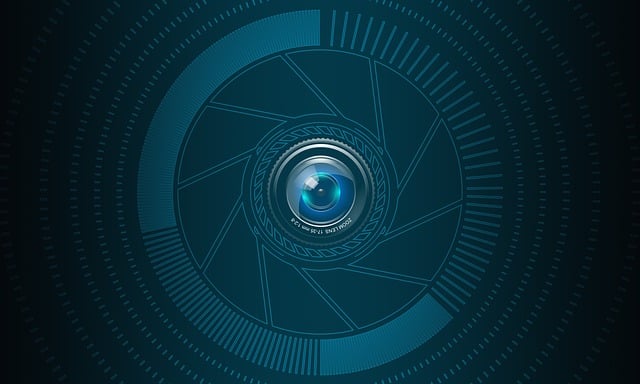In today's digital era, efficient file transfer rates are crucial for quick data movement, like burning Divx videos to DVDs. High transfer speeds reduce processing times and errors, especially with large file sizes. Optimizing systems, using specialized software with direct burning capabilities, and leveraging high-speed connections maximize the rate at which DivX files can be transferred to DVDs, ensuring seamless sharing of multimedia content while preserving video quality. This strategy, combined with regular hardware and software updates, significantly enhances overall file transfer efficiency.
In today’s digital age, fast and efficient file transfers are paramount, especially when dealing with large multimedia files like DivX. This article delves into the dynamics of file transfer rates, exploring both the basics and advanced techniques. We unravel common challenges that hinder speed, offering practical solutions such as burning DivX files to DVD for optimized transfers. Additionally, we provide insights on system optimization and tools to significantly enhance file transfer speeds, ensuring seamless digital workflows.
Understanding File Transfer Rates: The Basics

File transfer rates refer to the speed at which data, in this case, files like DivX videos, are transferred from one location to another over a network. It’s a fundamental concept when it comes to understanding how quickly and efficiently your media files, such as burning DivX files to DVD, can be shared or duplicated. The rate is typically measured in megabits per second (Mbps), indicating the amount of data transferred in millions of bits during one second.
A higher file transfer rate means faster processing times. When you’re burning DivX files to DVD, a fast transfer rate ensures your video data is copied quickly and accurately, reducing any potential delays or errors. This becomes especially crucial for larger file sizes, as it can significantly impact the overall duration of the transfer process.
Challenges in Fast File Transfers: Common Obstacles

In today’s digital age, where data is constantly exchanged, fast and efficient file transfer has become a necessity. However, achieving truly rapid and reliable rates presents several challenges. One common obstacle is the size and format of files; large multimedia files like DivX videos, for instance, require significant bandwidth and processing power to transfer quickly without loss in quality. This is especially true when burning these DivX files to DVDs, which can be a time-consuming process due to the data intensity.
Another hurdle lies in network connectivity. Even with high-speed internet connections, factors like latency, packet loss, and congestion can significantly impact transfer speeds. Additionally, the infrastructure supporting file transfer systems must be robust enough to handle large volumes of data without compromising speed or reliability. These challenges underscore the need for innovative solutions that can optimize file transfer processes across various digital platforms.
Burn DivX Files to DVD: A Practical Approach

With modern technology, transferring large files like DivX videos to DVDs has become a straightforward process, ensuring fast and efficient data transfer. The key lies in utilizing tools that can handle high-quality video content while maintaining optimal file size for burning onto a DVD. This practical approach involves converting your DivX files into a format compatible with most DVD players and burners.
By employing specialized software, you can directly burn these converted videos to DVDs, eliminating the need for intermediate storage or complex synchronization. The process ensures that your video content is preserved without compromising quality, making it ideal for sharing high-definition movies, documentaries, or personal videos. Efficient file transfer rates are achieved through optimized compression techniques and direct burning capabilities, resulting in a seamless experience for users on both ends.
Optimizing Your System for Efficient Transfers

To maximize file transfer efficiency, it’s essential to optimize your system. One practical step is to burn DivX files to DVD. This process involves converting and burning video files to a format compatible with most devices, reducing the data size while maintaining quality. By doing so, you not only speed up transfers but also ensure compatibility across various platforms.
Additionally, keeping your hardware and software updated plays a crucial role. Regularly updating your operating system and network drivers can significantly improve transfer rates by leveraging the latest optimizations and fixing potential bottlenecks. A well-optimized system ensures that file transfers are not just fast but also reliable, making it easier to share large files without complications.
Tools and Software to Enhance File Transfer Speeds

To maximize file transfer rates, leveraging the right tools and software is essential. One effective method is burning DivX files to DVD, which can significantly speed up data transfer, especially for large multimedia files. DivX, known for its high-quality video compression, allows for smaller file sizes without sacrificing visual integrity. By converting your DivX files to a DVD format, you take advantage of optical drive speeds, ensuring faster and more efficient transfers compared to digital methods alone.
Additionally, utilizing specialized file transfer software designed for fast and reliable data movement is another key strategy. These tools often employ advanced techniques like multi-threading, buffer optimization, and direct hardware access to maximize bandwidth utilization. Features such as pause and resume capabilities further enhance efficiency, making them ideal for large or intermittent transfers. With the right software in place, you can ensure that your file transfer process remains swift, dependable, and suitable for even the largest datasets.
In conclusion, optimizing file transfer rates is essential for efficient data exchange. By understanding the fundamentals and addressing common challenges, such as leveraging tools like burning DivX files to DVD, users can significantly enhance their transfer speeds. Additionally, system optimization plays a crucial role in ensuring fast and reliable data movement. With the right approach, combining practical methods and utilizing compatible software, achieving swift file transfers is achievable, catering to modern data demands.
